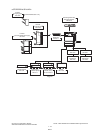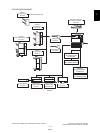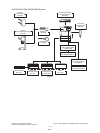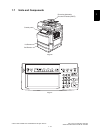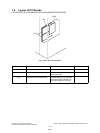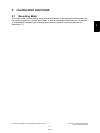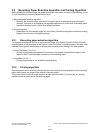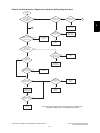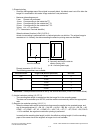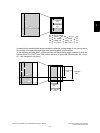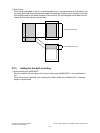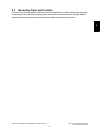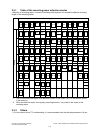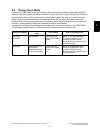GD-1150/1151/1200/1201/1160/1260 © 2003 - 2008 TOSHIBA TEC CORPORATION All rights reserved
LSU-RELATED FUNCTIONS
2 - 2
2.2 Recording Paper Selection Algorithm and Printing Algorithm
Before printing the received image, the preset settings are evaluated in the order of the following 1) and
2), and the printing is performed based on the result.
1) Recording paper selection algorithm
- Basically, the received image is printed on a sheet of paper of the same size as the original.
However, if this size is not available, this algorithm determines on which size of recording paper
the output should be made. (Actual Size Mode/Free Mode)
2) Printing algorithm
- Determines how the received image is to be printed. (Discard printing/Vertical reduction printing/
Regular size reduction printing/Split printing)
2.2.1 Recording paper selection algorithm
It is possible to distinguish the size of each received image (A3(LD)/B4(LG)/A4(LT)/B5/A5). Basically,
recording paper of the same size as the original is used for printing. If recording paper of the size is not
available, this algorithm selects paper of another size according to the setting in the Setting Mode.
1) Actual Size Mode (13-517: 0)
- Printing is performed when regular size reduction is not applied to the received image. In this
mode, an A4/LT received image is printed on a B4 recording paper.
2) Free Mode (13-517: 1)
- Printing is performed on any available recording paper.
2.2.2 Printing algorithm
Recording paper has its effective printing area. Even if the size of the original paper and the recording
paper are the same, the length of the original is normally longer.
This means that the received image would be divided onto two sheets. To prevent this, the printing
algorithm works as described in the following pages.
04/06



